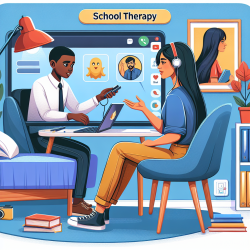Developed by Elisabeth H. Wiig, Wayne A. Secord, and Eleanor Semel, and published by Harcourt Assessment, Inc., the CELF Preschool-2 is designed to be quicker and easier to administer than its predecessor, while providing greater diagnostic value. This tool aids in assessing early classroom and literacy fundamentals, as well as communication in context (pragmatics).
Understanding the Levels of CELF Preschool-2
The CELF Preschool-2 is structured into multiple levels, each tailored to different aspects of language assessment:
- Level 1: Determines the presence of a language disorder through Sentence Structure, Word Structure, and Expressive Vocabulary Subtests, resulting in a Core Language Score.
- Level 2: Provides detailed information about language modalities, content, and structures, allowing for performance pattern analysis and comparison with norm-reference groups.
- Level 3: Evaluates early classroom and literacy fundamentals, including phonological awareness and pre-literacy skills.
- Level 4: Assesses pragmatic skills in social communication contexts through the Descriptive Pragmatics Profile, completed by a caregiver or familiar person.
Practical Implementation for Practitioners
For practitioners looking to enhance their skills, the CELF Preschool-2 offers several advantages:
- Efficiency: The test can be administered in approximately 20 minutes for Level 1, with additional time required for Levels 2 and 3.
- Comprehensive Analysis: The test results are interpreted using subtest scaled scores, composite standard scores, criterion scores, percentile ranks, and age equivalents.
- Detailed Guidelines: The Examiner's Manual provides extensive guidelines for scoring, interpreting test performance, and suggestions for intervention and follow-up.
- Engaging Materials: Stimulus Books are colorful and engaging, with illustrations that children find interesting and relatable.
Benefits of CELF Preschool-2
Using the CELF Preschool-2 in your practice can significantly improve the accuracy and efficiency of language assessments. The structured levels allow for tailored assessments based on the child's specific needs, making it easier to identify language disorders early and implement effective interventions.
Moreover, the inclusion of diverse illustrations ensures that children from various ethnic backgrounds can relate to the test materials, enhancing their engagement and providing more accurate assessment results.
Encouraging Further Research
While the CELF Preschool-2 is a powerful tool, practitioners are encouraged to stay updated with ongoing research and advancements in language assessment. By continuously refining your skills and knowledge, you can provide the best possible support to the children you work with.
To read the original research paper, please follow this link: Clinical Evaluation of Language Fundamentals Preschool - 2nd Edition (2004).










